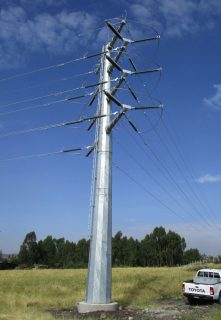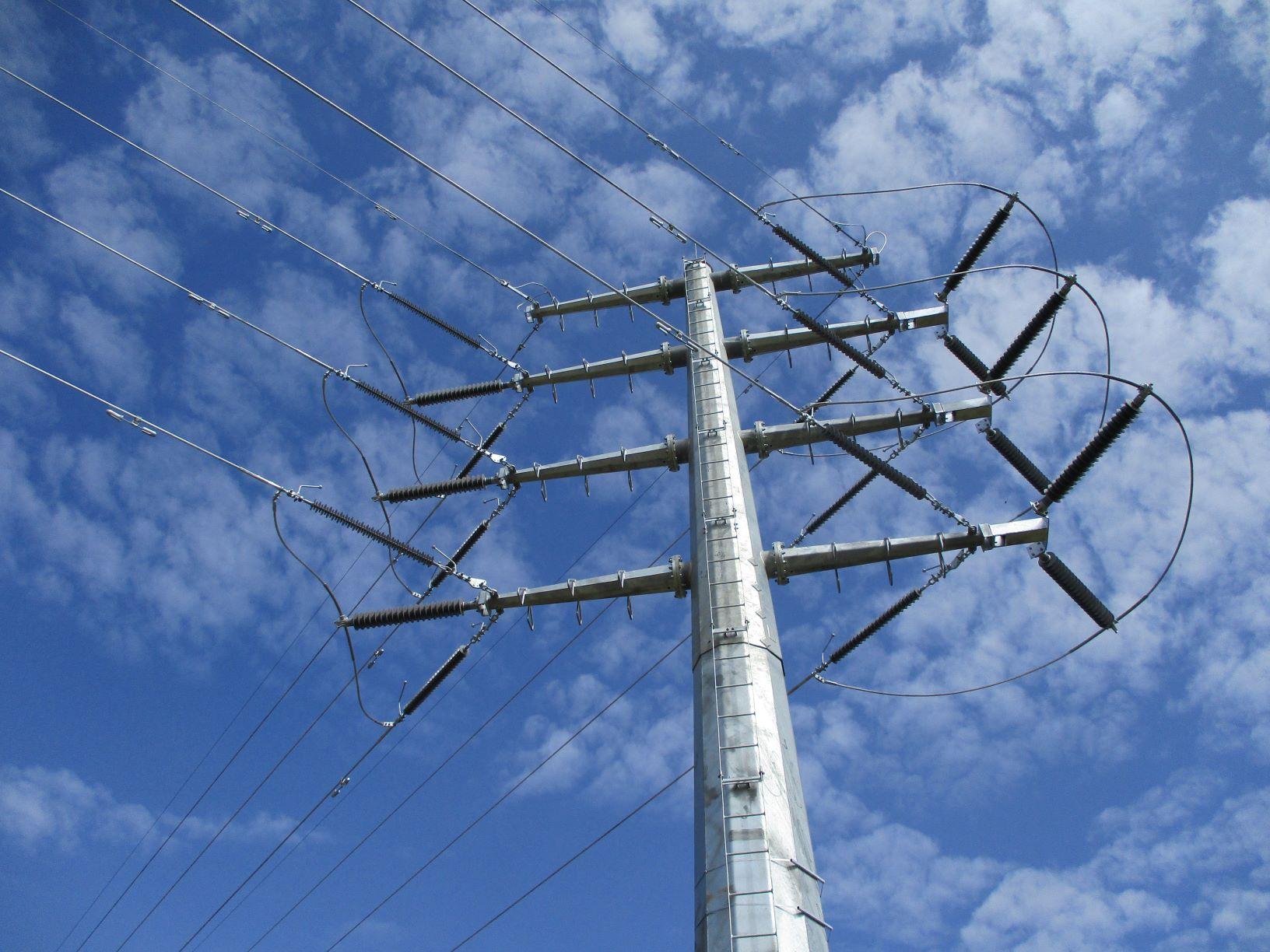Structa Group has proved that self-supported monopole masts can replace lattice-type towers in a large-scale power transmission and distribution project in Ethiopia. The company’s top mechanical engineer in charge of designing masts relates to Construction Review how this feat was accomplished and prospects for the project in Africa.
Visibly elated, Erasmus Cilliers, the senior mechanical engineer of Structa Group is revelling in the successful delivery of the company self-supported tubular monopole masts to a power transmission project in Ethiopia.
The ongoing project forms part of a large-scale electricity infrastructure upgrade for Ethiopia and focuses on the transmission and distribution of electricity from various substations to surrounding areas of Addis Ababa. These distribution networks convey electricity with high voltages from 132 kV up to 230 kV and span through tough terrains, city centres and densely populated informal settlements.
The ‘gamble’ pays off
The scope of works that Structa Group, through its subsidiary, Structa Konsult, carried outspanned data collection, surveying, design conceptualisation, detail designs, complete and signed manufacturing drawings, manufacturing, and the delivery of the masts. The project was a milestone as it was the first time the client considered using these sizable self-supported monopole masts in a high voltage transmission application.
According to Cilliers, initially, the client thought that it would be a big gamble to switch from the ‘tried and tested’ lattice-type pylon structures to large monopoles. However, the client thrust a spot of bother of sorts – with the lattice-type pylon structures, there was concern about the high risk of incidences of vandalism in areas where the poles were to be located to consider.
After conveying the experience with these masts in the field, and the rigorous tests that were conducted on the monopoles, administered by Eskom in South Africa, the final decision to settle for the self-supported monopole mast was a no-brainer.

“The masts manufactured for these lines were some of the biggest masts ever manufactured by Structa. They were required to be freestanding and supported two power line circuits with their respective optical ground wires simultaneously by means of eight cross arms,” relates Cilliers, eager to explain to Construction Review why the client was convinced beyond a reasonable doubt that Structa’s self-supporting monopole would serve the purpose far better than lattice-type pylon towers.
What gives tubular monopoles the edge
Referencing Structa Group’s flagship product, Cilliers mentions the following as typical advantages of tubular monopoles: low maintenance costs and modifiable, good protection against vandalism and theft, smaller footprints, lower probability of catastrophic failures, and excellent life expectancy.
-
Low maintenance costs and modifiable
The inherent reliability of these masts ensures that little to no maintenance is required. “The predominant maintenance is when structures of an existing line are analysed to determine if the same structures can support new conductors with improved electricity characteristics,” states Cilliers.
“Additionally, the capabilities of the structure can be increased by adding non-invasive clamp-on modifications. These modifications are designed, manufactured and supplied on a problem-specific basis. Furthermore, we are in the business of design, manufacture and supply of the masts, if our clients require more of the masts or new designs we will deliver,” he continues.
-
Vandalism and theft-proof
Self-supported masts are becoming prevalent in structure designs of transmission and communication projects, and this is mainly to counteract high vandalism or theft in areas with the identified risks.
“Theft of steel is one of the leading problems in many countries. That is why towers are being stripped of their steel members and are sold as scrap. Some members of welded towers are also being removed using portable power tools,” reveals Cilliers.
However, vandalism does not affect steel masts, as a steel mast cannot be disassembled using regular tools or transported with domestic vehicles. This is because when a mast is surface-mounted in an area identified as high theft or vandalism risk, the foundation gets an additional concrete cap that conceals the bolts.
-
Smaller footprint
Self-supported masts are designed to support conductors without any external support such as a strut or stay wires. Compared with towers, they have a smaller footprint and only requires a little land space. A piled foundation for specific structures can be used to create a smaller foundation footprint.

-
High durability and longer life expectancy
The galvanisation of the masts, paired with the low number of holes and surfaces provides exceptional corrosion protection and significantly extends the life of the structure.
-
Less installation time
The skills required for the construction process and installation of lattice-type towers and monopole masts are a bit different. Moreover, masts usually require less installation time compared to the assembly procedures of towers. “The installation of towers versus masts is entirely different. A tower is installed by bolting together parts or complete sections on the ground before lifting to the correct heights using cranes and are then bolted together,” Cilliers illuminates.
Taking the mast into Africa
Building on experience from the project in Ethiopia, Structa is looking forward to providing its know-how in power and telecommunication transmission pole solutions to clients in other African countries. And already, there are encouraging prospects. “We are continuously receiving requests for mast designs, and we strive to optimise these masts in conjunction with the project requirements and scope.
In terms of using self-supported masts, some projects have been identified for which these masts will be a highly suitable product,” reveals, adding: “However, the use of towers is never eliminated but rather added as an additional avenue. Structa is always ready to take on the task of designing and manufacturing optimised sustainable products for their clients.”
Structa was able to deliver the first batch of masts within 15 months from the initial contact. What made the project a different kind of a beast was that the monopoles were for the Ethiopian project were beyond the size that the company normally delivers for clients. Structa manufactures standard masts and towers for voltages of 11kV up to 220kV. But Cilliers is content that it was delivered to client’s expectations – on time, to exact specifications in terms of size and quality.
Currently, Structa has three masts product categories: light masts, communication structures, and the utility and transmission towers marketed as Electrotowers.

